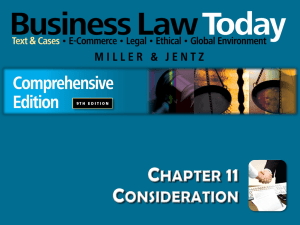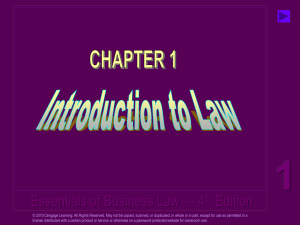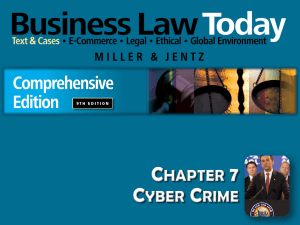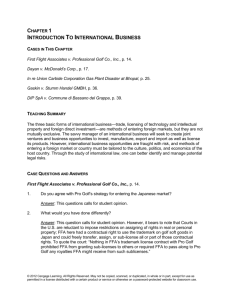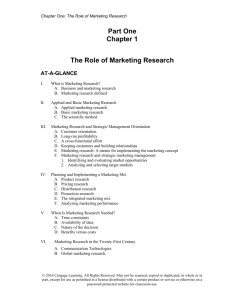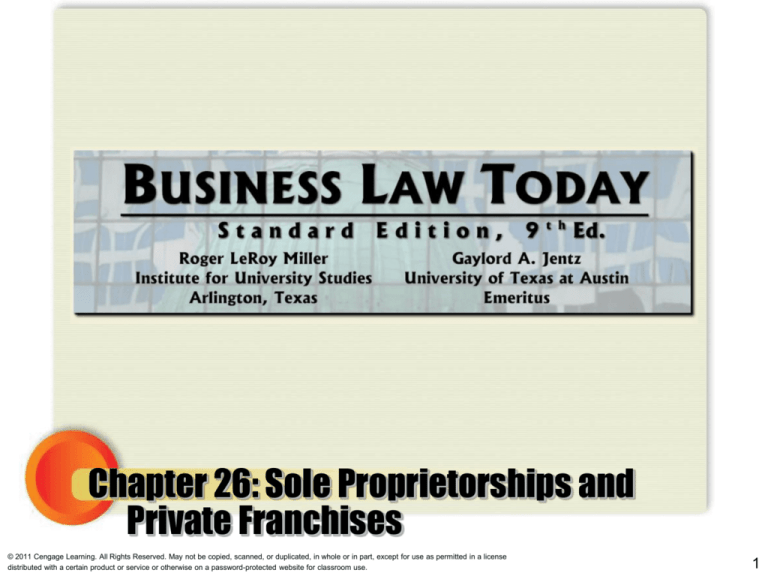
Chapter 26: Sole Proprietorships and
Private Franchises
© 2011 Cengage Learning. All Rights Reserved. May not be copied, scanned, or duplicated, in whole or in part, except for use as permitted in a license
distributed with a certain product or service or otherwise on a password-protected website for classroom use.
1
Learning Objectives
• What advantages and disadvantages are
associated with the sole proprietorship?
• What is a franchise? What are the most
common types of franchises?
• What laws govern a franchising
relationship?
• What terms and conditions are typically
included in a franchise contact?
• What is wrongful termination? In what types
of situations do courts typically find that a
franchisor has wrongfully terminated a
franchise?
© 2011 Cengage Learning. All Rights Reserved. May not be copied, scanned, or duplicated, in whole or in part, except for use as permitted in
a license distributed with a certain product or service or otherwise on a password-protected website for classroom use.
2
Introduction
• Entrepreneurs wishing to start a new
business must be aware of advantages
and disadvantages of various
business entities for their endeavor.
Consider:
– Ease of creation.
– Owners’ liability.
– Tax considerations.
– Need for Capital.
© 2011 Cengage Learning. All Rights Reserved. May not be copied, scanned, or duplicated, in whole or in part, except for use as permitted in
a license distributed with a certain product or service or otherwise on a password-protected website for classroom use.
3
Sole Proprietorships
The owner is the business itself; anyone who
does business without creating a separate legal
business organization is a sole proprietorship.
Advantages
Disadvantages
Owner is in complete control &
receives all profits
Owner is personally liable for
all torts/contracts
Flexibility
Lacks continuity after death
Ease of creation; maintenance
Difficult to raise financing
Case 26.1 Garden City Boxing Club, Inc.
v. Dominguez.
Restaurant was a sole proprietorship for commercial
purposes and owner (Dominguez) is personally liable.
© 2011 Cengage Learning. All Rights Reserved. May not be copied, scanned, or duplicated, in whole or in part, except for use as permitted in
a license distributed with a certain product or service or otherwise on a password-protected website for classroom use.
4
Franchises
• Franchise is an arrangement between
a Franchisor (owner of a trademark or
trade name) and a Franchisee can sell
goods or services.
• 25% of all retail sales based on
franchise merchandising.
© 2011 Cengage Learning. All Rights Reserved. May not be copied, scanned, or duplicated, in whole or in part, except for use as permitted in
a license distributed with a certain product or service or otherwise on a password-protected website for classroom use.
5
Types of Franchises
• Distributorship.
– Involves licensing a product and may include a
territory.
• Chain-Style Business Operation.
– Involves licensing a trademark (or brand).
– Franchisee required to followed standardized
operations and quality control.
– Sometimes franchisee may be required to buy
supplies from franchisor.
• Manufacturing or Processing Plant.
– Involves essential ingredients or formula to make a
product.
© 2011 Cengage Learning. All Rights Reserved. May not be copied, scanned, or duplicated, in whole or in part, except for use as permitted in
a license distributed with a certain product or service or otherwise on a password-protected website for classroom use.
6
Laws Governing Franchising
• Generally governed by contract law.
• If involves sale of goods over $500,
UCC Article 2 applies.
• Federal Regulation of Franchising.
– FTC “Franchise Rule” requires certain
material disclosures.
• State Regulation.
– Often involves bad faith and deceptive
practices.
© 2011 Cengage Learning. All Rights Reserved. May not be copied, scanned, or duplicated, in whole or in part, except for use as permitted in
a license distributed with a certain product or service or otherwise on a password-protected website for classroom use.
7
The Franchise Contract
• Key Provisions:
– Payment.
– Business Premises and Organization.
– Location of the Franchise.
– Quality Control (key issue).
– Pricing Arrangements (including supplies
from franchisor).
© 2011 Cengage Learning. All Rights Reserved. May not be copied, scanned, or duplicated, in whole or in part, except for use as permitted in
a license distributed with a certain product or service or otherwise on a password-protected website for classroom use.
8
Termination of the Franchise
• Duration is determined by contract.
• Notice is by contract, or within a
reasonable time.
• Franchisor can give franchisee an
opportunity to “cure” an ordinary
breach, but not a material breach.
Case 26.2 LJL Transportation, Inc. v.
Pilot Air Freight Corp.
Even though a franchise contract contains a “right-tocure” clause, a franchisee’s material breach of contract
can justify immediate termination of contract.
© 2011 Cengage Learning. All Rights Reserved. May not be copied, scanned, or duplicated, in whole or in part, except for use as permitted in
a license distributed with a certain product or service or otherwise on a password-protected website for classroom use.
9
Termination of the Franchise
• Wrongful Termination.
– Favor franchisor.
– Federal and state laws attempt to protect
franchisee from arbitrary and unfair actions.
• Importance of Good Faith and Fair
Dealing.
Case 26.3 Chic Miller’s Chevrolet, Inc. v.
General Motors Corp.
After several notices, GM acted in good faith when it
terminated Miller’s franchise contract for failure to
maintain the line of credit.
© 2011 Cengage Learning. All Rights Reserved. May not be copied, scanned, or duplicated, in whole or in part, except for use as permitted in
a license distributed with a certain product or service or otherwise on a password-protected website for classroom use.
10






